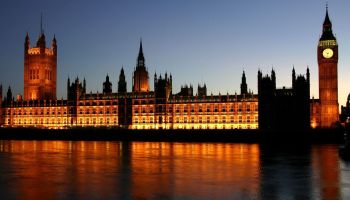

The man in charge of the Cabinet Office’s “skunkworks” department, has hailed the success of the new e-petition website, despite a brief crash on its first day of operation.
Mark O’Neill, writing on the Government Digital Service blog, said that the government’s new e-petitions service has so far attracted huge numbers of visitors, despite it only being launched at 12pm on 4 August.
“…it is fair to say that it has been far more popular than we ever expected,” wrote O’Neill. “At peak we have seen over 12,000 hits per minute.”
He said that the site has had more than 2 million visitors since the launch and over 12 million page views. He also pointed out that it has so far raised 12,000 petitions, collecting a staggering 700,000 signatures.
Indeed, the first pet
“To put these figures in context, this is the level of traffic we would expect for the entire of Directgov,” wrote O’Neill.
He admitted that at times the site struggled to cope with demand.
“We have been working hard to increase the performance and tackle the bottlenecks and I must thank colleagues on the single domain team for their support which has been invaluable and really helped us out. There will be cake,” he wrote.
The service reportedly crashed temporarily on its first day due to the surge in demand, and O’Neill acknowledged in the blog that some technical issues had arisen in the first few days.
These included slow email responses, firewall configuration limiting the number of connections, and the search indexing putting too much load on the search server, slowing down all search queries and therefore the site as a whole.
O’Neill said they were adding capacity and implementing other measures to resolve these problems. This includes the implementation of “additional monitoring tools to provide a range of consistent ways of monitoring all our systems and services.”
“For now I would just like to thank everyone who has used the site, all those who have provided feedback (and we read every piece we get) and apologise to those who have had difficulty in accessing the site over the last week,” wrote O’Neill.
The success of the new website comes amid cuts to so called vanity websites as the government continues to chase ICT savings.
Back in June 2010 Minister for the Cabinet Office, Francis Maude, pledged that the government would “scrap hundreds of unnecessary and expensive government websites and slash the cost of the remaining sites to save millions of pounds.”
Then at the start of this month, the government announced that it had wound up almost half of central government departments’ websites.
As of the 1 July, 444 websites are still open, down from 820, according to the Cabinet Office, and Whitehall has committed to closing another 243, adding up to 80 percent of the government’s websites.
American space agency prepares for testing of Boeing's Starliner, to ensure it has two space…
As UK and Europe develop closer military ties, European Commission says it will invest €1.3…
Zuckerberg seeks to revive Facebook's original spirit, as Meta launches Facebook Friends tab, so users…
Notable development for Meta, after appeal against 2021 WhatsApp privacy fine is backed by advisor…
First sign of shake-up under new CEO Lip-Bu Tan? Three Intel board members confirm they…
Trump's nominee for SEC Chairman, Paul Atkins, has pledged a “rational, coherent, and principled approach”…